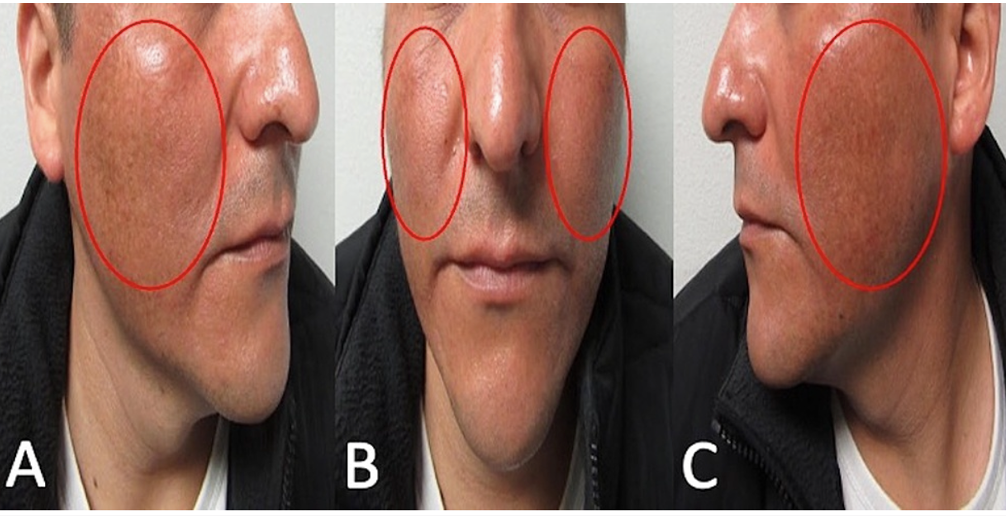Doxycycline Induced Hyperpigmentation without Sun Exposed
Can doxycycline induce hyperpigmentation?
Tetracycline antibiotics are well known to cause hyperpigmentation. Minocycline is the most well recognized among the tetracyclines to cause drug induced pigmentation. It can cause pigmentation of the skin, mucous membranes, sclera and nails
There are four mechanisms that have been proposed when one considers why pigmentation might have occurred from use of a drug. These are: 1) the drug triggers accumulation of melanin 2) the triggering medication accumulates in the skin 3) the drug triggers synthesis of special pigments 4) the drug triggers deposition of iron
Afrin et al 2022
Afrin et al reported an otherwise healthy 40-year-old male who experienced facial and dorsal hand hyperpigmentation within two weeks of beginning doxycycline monohydrate 100 milligrams twice daily for acne. Two weeks into treatment, the patient developed hyperpigmentation on his face (including in prior scars) and hands. He denied any sun exposure. There was no hyperpigmentation of the mucosal membranes. Additionally, there was no subungual or nail pigmentation. Skin pigmentation significantly diminished at a follow-up evaluation two months after discontinuing the medication.
Skin pigmentation following using of doxycycline. Image from: Afrin et al. Doxycycline-Associated Hyperpigmentation: A Case Report and Literature Review. Cureus . 2022 Apr 2;14(4):e23754. Used under creative commons license.
Skin pigmentation of the hands following using of doxycycline. Image from: Afrin et al. Doxycycline-Associated Hyperpigmentation: A Case Report and Literature Review. Cureus . 2022 Apr 2;14(4):e23754. Used under creative commons license.
How common is doxycycline induced hyperpigmentation?
The authors point out that doxycycline-associated skin hyperpigmentation seems to be uncommon and they summarize 18 patients in the literature with this side effect. This included 13 males and five females ranging in age from 11 to 87 years; eight of the patients were less than 50 years old and ten of the patients were over 60 years old. Doxycycline-associated hyperpigmentation frequently occurs on the face and can occur at the site of a previous scar. In most cases, doxycycline discontinuation was associated with resolution of hyperpigmentation. The appearance of hyperpigmentation ranged from two days to 12 years; the median time for onset of hyperpigmentation was eight months. In 7 of 18 patients (38.9%), hyperpigmentation from doxycycline occured within 1 month. In 13 of 18 patients (72.2%), the pigmentation occurred within 1 year.
The authors point out that 4 of the 18 patients had pigmentation in prior areas of scarring. This is well known to occur with minocycline as well. 7 patients had pigmentation affecting the face and this was the most common area. 4 had pigmentation affecting the lower limbs and 4 had pigmentation affecting the upper limbs
Of the 14 patients who discontinued the doxycycline, nine reported resolution of the pigment, four reported the hyperpigmentation did not resolve, and one case outcome was not described. The time for discoloration to resolve ranged from one month to 24 months for the nine patients who reported resolution
REFERENCE
Afrin et al. Doxycycline-Associated Hyperpigmentation: A Case Report and Literature Review. Cureus . 2022 Apr 2;14(4):e23754.
This article was written by Dr. Jeff Donovan, a Canadian and US board certified dermatologist specializing exclusively in hair loss.


